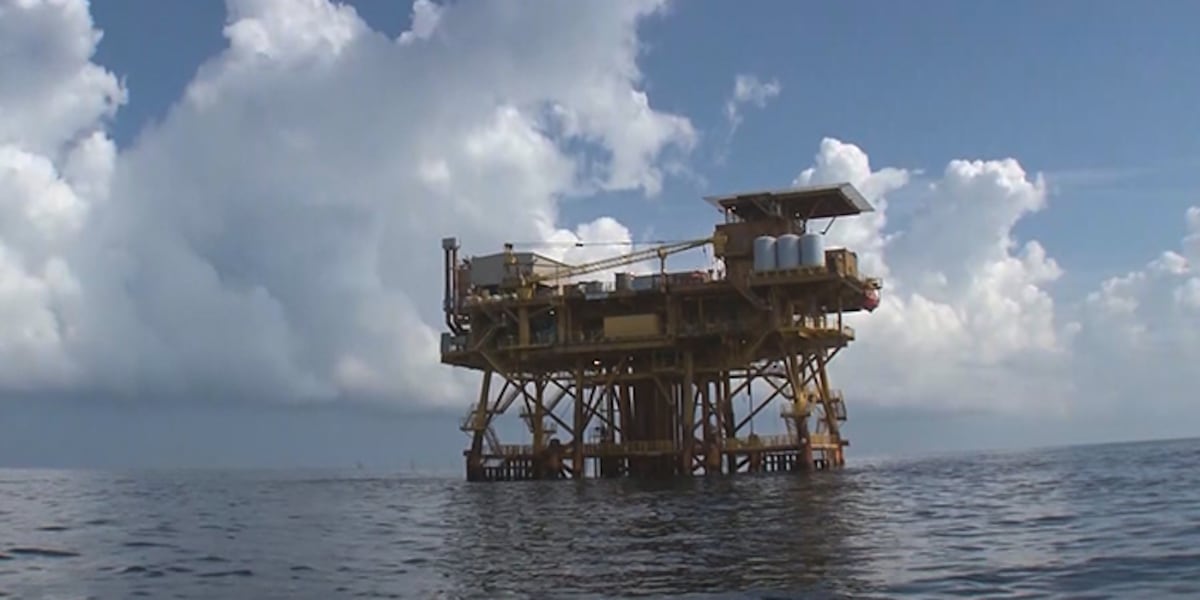ANCHORAGE, Alaska (KTUU) – Alaska’s congressional delegation is responding on Monday — some members more vocally than others — to the White House’s announcement that President Joe Biden will ban new offshore oil and gas drilling along most of the U.S. coastline.
This order will protect approximately 625 million acres of ocean along America’s Atlantic and Pacific coasts, the Gulf of Mexico, and Alaska’s Bering Sea, citing environmental risks as one of the main reasons for the decision.
In a statement, President Biden, whose term expires in two weeks, said he is using authority under the federal Outer Continental Shelf Lands Act, which gives the president power to withdraw unleased lands from the outer continental shelf indefinitely.
Furthermore, he said that during his term, his administration has conserved more than 670 million acres of America’s lands and waters —more than any other president in history.
“Our country’s remarkable conservation and restoration progress has been locally led by Tribes, farmers and ranchers, fishermen, small businesses, and outdoor recreation enthusiasts across the country. Together, our ‘America the Beautiful’ initiative put the United States on track to meet my ambitious goal to conserve at least 30 percent of our Nation’s lands and waters by 2030,” President Biden said in a statement.
Reacting to the news on social media, newly sworn-in Rep. Nick Begich, R-Alaska, hit the ground running, calling the President a “son of a bitch” in a social media post on “X”.
Begich continued in the post saying, “Events like this should serve as a constant reminder that the Democratic machine is more than willing to sacrifice us all for their sanctimonious, socialist-driven climate science.”
Speaking to Alaska’s News Source on Monday, Begich said sometimes, in Congress, you have to “shout to be heard.”
“I’m sorry that we had to say what we did, but I’m not sorry that we did it, and I will continue to be a strong voice for Alaska while I’m in Congress,” Begich said.
The Biden Administration stated that the withdrawal will safeguard 44 million acres of the Northern Bering Sea, located in far northwest Alaska. The Alaskan congressional delegation has previously opposed proposals to permit oil and gas leasing and drilling in this region.
Opposing what he describes as a last-minute move by the Biden Administration, Sen. Dan Sullivan, R-Alaska, stated on Monday that he has never advocated for resource development in the Bering Sea area, as there is limited resource potential in that region.
Sullivan’s frustration lies in the unilateral process that the Biden Administration aims to use to make such a broad, sweeping move. Furthermore, Sullivan says the administration did not consult Alaska’s congressional delegation before announcing it.
“We’ve had 68 executive orders and executive actions singularly focused on Alaska by the Biden-Harris Administration. They did not consult with us on probably even one of them,” Sullivan said. “It’s no exaggeration to say this administration has sanctioned Alaskans and our energy industry more than he sanctioned the terrorist regimes in Iran and Venezuela.”
Sen. Lisa Murkowski, R-Alaska, echoed Sullivan in a statement released Monday saying she understands the Biden Administration is trying to establish its “environmental legacy” before leaving office, but she believes the “11th-hour” move is the wrong approach.
She went on to say she agrees not all offshore areas need to be available for development and understands the desire of Alaska Tribes in the region to prevent any oil and gas development in nearby waters.
Her frustrations, like Sullivan’s, are broader.
“Cook Inlet is a good example: instead of working with Alaskans to prevent looming energy shortages in Southcentral, the administration has actively worked against our ability to produce more natural gas from that basin. What we have faced over the past four years is an unbalanced policy that has left us on the verge of importing LNG,” Murkowski said.
Speaking to the Biden Administration’s concerns about man-made catastrophes, such as the Deepwater Horizon oil spill that took the lives of eleven people and released millions of barrels of oil into the Gulf of Mexico, Begich acknowledged that the fishing industry is vital to Alaska.
However, he emphasized the importance of examining Alaska’s track record concerning these issues.
“We have the highest environmental standards in Alaska, as of any jurisdiction in the world. When you shut down areas like Alaska, you’re just pushing that work to a jurisdiction with lower environmental standards and a worse record,” Begich said.
When asked about what Alaska’s congressional delegation is doing in light of a new administration that touts the unleashing of Alaska’s national resource potential, Sullivan said he has a meeting scheduled with North Dakota Governor (Doug) Burgum on Tuesday. Burgum has been nominated by President-elect Trump as the new Secretary of the Interior and as the chairman of the newly formed National Energy Council.
“What we’re working on with them is to look at ways in which we can reverse many of these executive orders, either through a Trump Administration executive order or through legislation,” Sullivan said.
He stated the delegation is examining what is known as budget reconciliation provisions.
“We’re going to try and get passed in the law that focus on unleashing American energy. And when you unleash American energy, you have to unleash Alaska,” Sullivan said.
Begich added that unraveling the Biden Administration’s latest order using provisions under the Outer Continental Shelf Lands Act could be difficult and may require an act of Congress.
“The Act that President Biden has invoked has some very specific language that may be challenging to repeal when President Trump takes office,” Begich said.
See a spelling or grammar error? Report it to web@ktuu.com
Copyright 2025 KTUU. All rights reserved.
:quality(70)/cloudfront-us-east-1.images.arcpublishing.com/adn/4Q7B6SQ2FBG57NFW6Q57IVIGGI.jpg)
:quality(70)/cloudfront-us-east-1.images.arcpublishing.com/adn/SQ5ZPQI2NFALVK2LYWFT7GYFN4.jpg)
:quality(70)/cloudfront-us-east-1.images.arcpublishing.com/adn/NPZY2UZKF5CTJO5SFEJLC363B4.jpg)
:quality(70)/cloudfront-us-east-1.images.arcpublishing.com/adn/ERKH4PUCLZEKFKOIMJG22OMDQE.jpg)
:quality(70)/cloudfront-us-east-1.images.arcpublishing.com/adn/3SDVUL6NAZCXVI2W6EIVACL7TY.jpg)
:quality(70)/cloudfront-us-east-1.images.arcpublishing.com/adn/NIQXQDUKOBECZJIZNA2FGOBWMQ.jpg)
:quality(70)/cloudfront-us-east-1.images.arcpublishing.com/adn/AYMIKDBUB5AVXOWLEEFEVXM5RQ.jpg)

:quality(70)/cloudfront-us-east-1.images.arcpublishing.com/adn/2D2K7AAYWFCRHEU2YGMP7INFUU.JPG)
:quality(70)/cloudfront-us-east-1.images.arcpublishing.com/adn/A6PJCJM6FVC2HPOQKPG4MS5XGE.jpg)
:quality(70)/cloudfront-us-east-1.images.arcpublishing.com/adn/B7QB4NKLLZFYPG4FCQWM6YKQAA.jpg)
:quality(70)/cloudfront-us-east-1.images.arcpublishing.com/adn/TWKZ4KLLIBECTHDYL7N3NFM3OI.jpg)
:quality(70)/cloudfront-us-east-1.images.arcpublishing.com/adn/K72ZWXDM7JHE7EDOIBNMOKRVEU.JPG)




















/cdn.vox-cdn.com/uploads/chorus_asset/file/24982514/Quest_3_dock.jpg)





